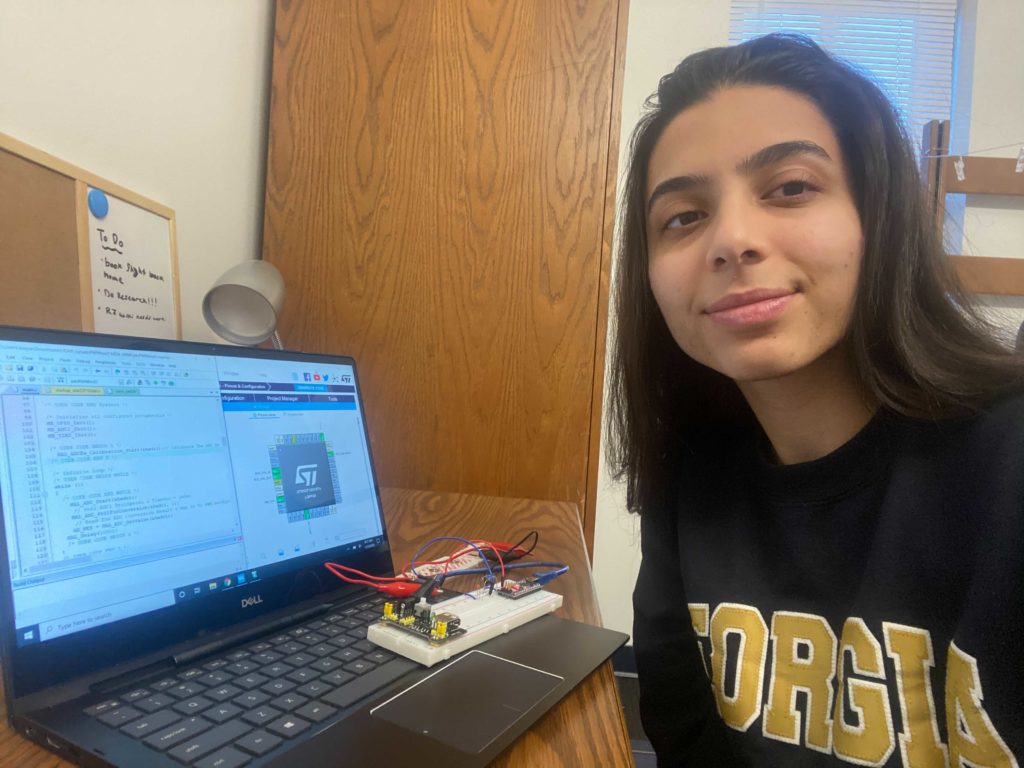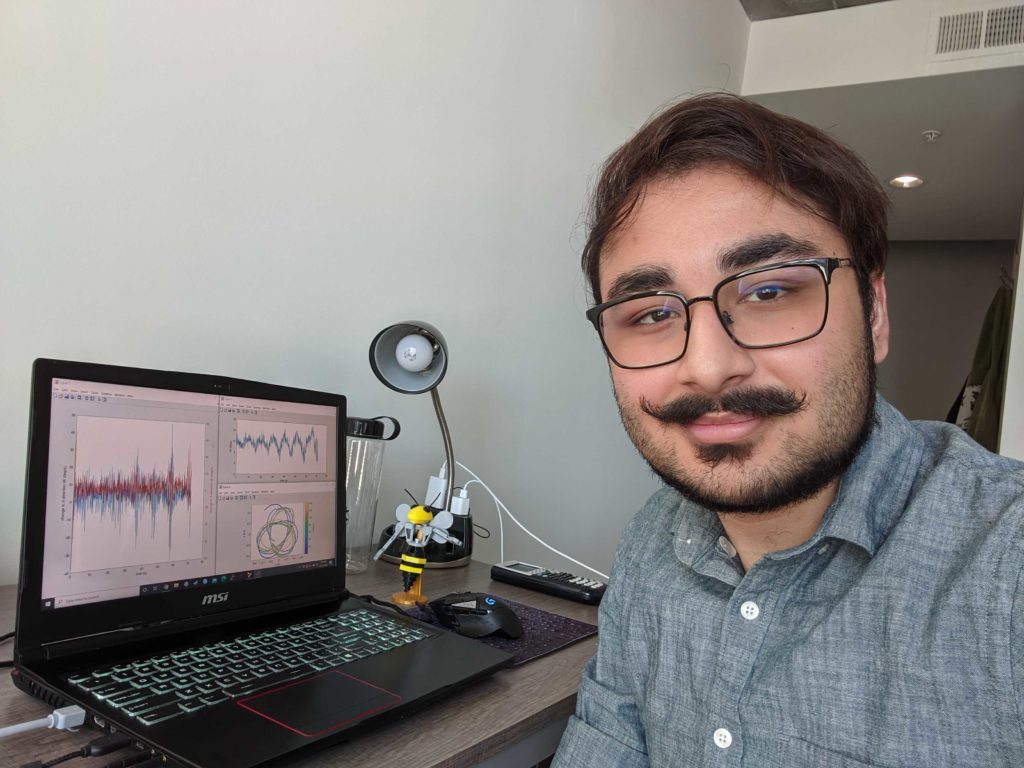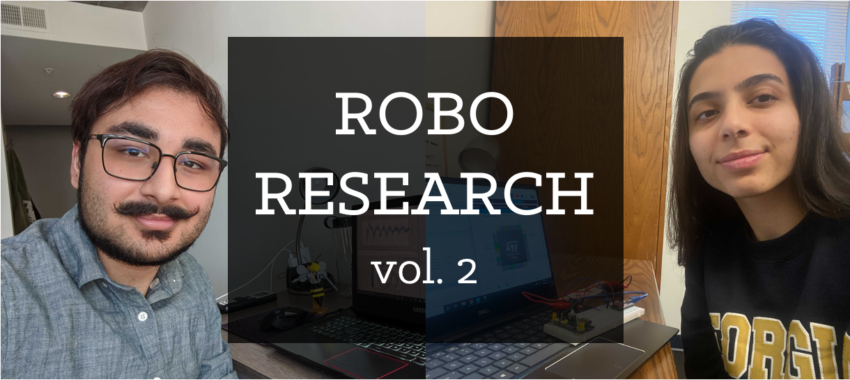by Jonathan Spalten.
Another newsletter brings us another opportunity to feature RoboJackets members who take part in robotics or robotics-adjacent research at the Institute. Just as we did last month, we’ll be taking this opportunity to feature two of our members involved in research.

Malak Bayyari, the current Secretary, is part of a Vertically Integrated Project (VIP) with the Laboratory for Intelligent Decision and Autonomous Robots (LIDAR). She explains, “The LIDAR team is split into several different subteams that work on a variety of projects to improve our two main robots, Cassie and Athena.” The robot she works on is Athena, “a bio-inspired, highly agile upper body humanoid robot.” The problem her team is working on is addressing an issue where Athena has a large number of wired connections that disrupt long periods of movement. They are choosing to address this by “creating a network of smaller PCBs in the arm.” Malak’s core responsibilities are in the software side, specifically on “researching and working on preparing the necessary code that will allow Athena to move almost completely wirelessly,” while the rest of her team works on the design of the PCBs. She also highlights her learning during her experience: “Throughout the semester this has involved familiarizing myself with the STM32 hardware and software, and PID controls systems.” You can learn more about Malak’s VIP here.

Hussain Gynai, former Software Training lead and current RoboCup Software lead, does research with the Complex Rheology and Biomechanics (CRAB) lab. His research focus is on “self-locomoting objects (like robots) [that] move on membranes that can deform.” His current focus is to “use results from previous research done on the system to create a wheeled robot that is able localize and move to or away from object[s] on the membrane.” In order to simulate an object on a membrane, a gantry system is used “to create a mobile ‘depression’ on the surface that moves in some trajectory across the membrane.” The robots he works with use an inertial measurement unit (IMU) to detect where the depression is. Based on this input, the robots then use a control system to move away from or toward the depression. This is only the beginning of this work: “The end goal is to have an n-robot case where we can have many robots interacting on the membrane without colliding.” He also helps with the development of a software simulation for the gantry-robot system to enable faster iteration.

